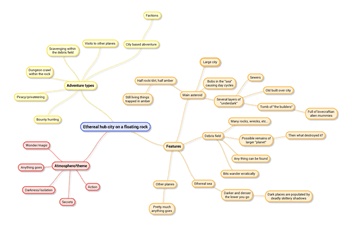 Mind Mapping is an information organizing technique, also called web mapping, concept mapping, spider mapping, or spray mapping. It involves building a fairly free-form web of related concepts with pathways between them. Useful for almost any aspects of GMing, it can be applied to brainstorming ideas, planning campaigns, settings, adventures, characters, locations, and pretty much anything else.
Mind Mapping is an information organizing technique, also called web mapping, concept mapping, spider mapping, or spray mapping. It involves building a fairly free-form web of related concepts with pathways between them. Useful for almost any aspects of GMing, it can be applied to brainstorming ideas, planning campaigns, settings, adventures, characters, locations, and pretty much anything else.
The execution is simple. Write down the big idea in the center of a blank sheet of paper, then write down a smaller related idea nearby and draw a line between the two. Repeat. Repeat. Repeat. Outside the big idea will be a ring of categories or topics. If you’re making a country, the next tier might be things like economy, government, ecology, etc… Anything you might have an idea about is fair game. From those spring more specific details. Ecology might have a link to various sub locations or notes on weather.
Let’s take a look at a campaign I’m working on as an example: I’m imagining a site based campaign with a setting similar to Planescape or Spelljammer. Set in a major hub city in the ethereal plane near common termini for magical and ship based travel. I start with the big idea:
Click on any of these pictures for a better view, btw.
From there I add three major topics I want to think about. Features: what does this big floating rock look like? Adventure Types: What is there to do here? and Atmosphere: What kind of themes and feelings do I want to invoke?
Of course order’s not important. If I had wanted to completely flesh out features before I moved on to adventure types, I could have. Similarly if I decide to add a fourth big topic later, that’s not a problem. But for demonstration’s sake, next I’ll add some stuff to Atmosphere/Theme:
Next is Adventure types, then Features:
Here’s what the whole thing looks like together:
Mind maps offer some advantages over more common organizational and note taking methods. They’re fast and easy to create, they only require you write down essential “bytes” of information, they have a visual organization that’s easy to grasp, they can create visual structures that approximate the relationships contained within, and they make cool pictures!
They can however, take up inordinate amounts of physical space and it’s easy to accidently duplicate information (if you find yourself mentioning the castle in two places just draw a new line between the multiple instances and only use one).
For the mind maps shown above, I used the free android app SimpleMind Free. There are plenty of other tech and luddite options available as well.

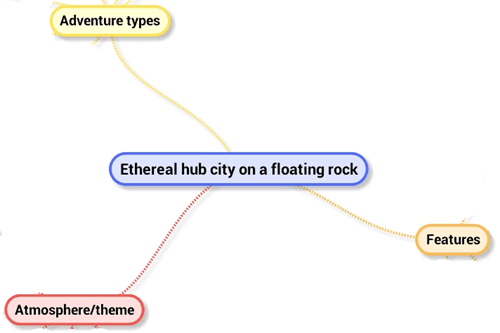

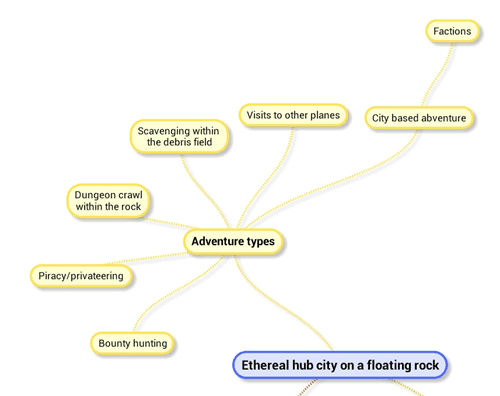




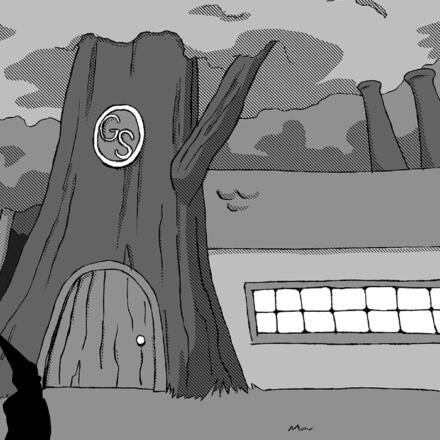



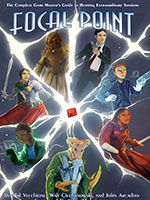
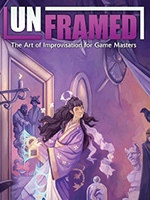

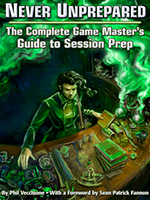
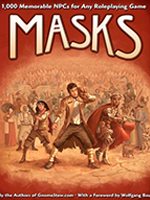
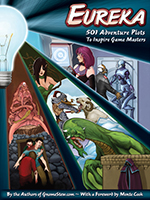
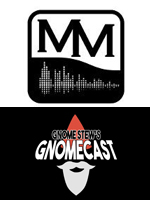

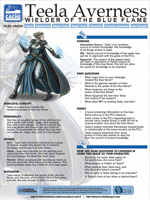
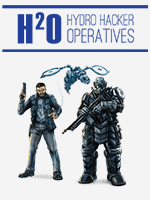
I love this technique– I find that it captures some ideas and responds better to brainstorming than my traditional and loved lists.
For me I would usually do something like the above in written format, kind of like a very dry history brief but I found those taking forever and with a lot of wasted time and energy on unnecessary words and worrying about order etc…
Maybe this is just me, but mind maps don’t strike me as very helpful. They might be good to develop an idea, but as soon as the first thoughts are put together, it’s time for bullet points.
I especially hate the fact that as soon as you scramble some ideas together, mind maps tend to expand to endless proportions. Sooner or later, you’ll either loose track of your thoughts or you’ll run out of space on your paper.
I also prefer to structure my ideas in bullet points since then you can organise them by importance, alphabet, or else. And you have more space to write this way:)
Use these all the time. I learned about them as study tools. The idea is that every person processes information differently. Each map is unique to the person. And because they eliminate inefficient words (all the stuff that makes a sentence), retention of info is very high when doing this for class notes. Used for gaming, and they’re basically the ultimate in prep lite. An hour mapping like this can yield a day’s worth of material, particularly if you’re ok fleshing things out on the fly. Another benefit is that you can plan alternatives quickly, and anticipate party decisions by covering all the obvious choices. When they take option “I didn’t think of that”, you can brain web on the fly, or in your head, a satisfying course of events.
Blow through the paper. Buy and steal reams. Your brain will keep it all straight with surprising ease. And you’ll be able to pick out what really needs a good old fashioned list.
A useful concept for maintaining the insanity of your brain on the sanity of paper.
Several years ago I decided to abandon all of my many spiral notebooks and exclusively use mind mapping from now on for GMing.
The reason for this was actually a single session, nearly ten years ago. A friend of mine (one of our “now and then†GMs) had prepared an adventure and was very proud. We made our characters, sat down, and a disaster ensued.
The strange thing was this: his story was too good. In fact, it was SO good that for all of its epic splendor to be revealed, a specific sequence of events had to unfold. The players had to behave a certain way and make certain decisions (you’re already nodding, I suspect) in order for the truly (truly) awesome plot to be finally unveiled to the players.
Total havoc. The players, myself included to my shame, rebelled. The GM had, lurking in the shadows behind his screen, a linear sequence that HAD to be obeyed. He tried to use coincidence to get us back on track, he tried guilt (that child will DIE if you don’t!), he tried overwhelming power (oh, well, there’s an arch-lich dragon god down THAT road, so whose clever now?), and finally it degenerated into one player saying “Fine, you’ve got this all figured out, YOU play this character†and storming out.
Might have been me.
I’ve dreaded that happening to me ever since. I feared that, underneath it all, the players could feel that linear current carrying them (regardless of what they want) towards my chain of events. Years later I realized that although that may be true, it is actually ME who feels that linear current and resents it. You see, I realized that no matter how well I compensated for the linear adventure on my notebook in front of me, I was still COMPENSATING.
Something had to be done. I had to break free of the notebook and somehow establish a way that I could plan and prepare without sequencing. The best tool I’ve found for that so far has been mind mapping.
It allows me to “throw out†ideas into the map in a brainstorm- NPCs, locations I want to use, memorable moments that will be good if they happen, key items, even conceptual things like “betrayal†and “hope restoredâ€. From there, I can begin to flesh them out and connect them (as so eloquently detailed in the article). This is particularly nice, because I can come back later and “lift out†things I didn’t use for later sessions- my “idea waste†ratio has gone way down.
Another thing I’ll mention is that there are some excellent programs and apps out there for mind mapping. I use an app in my iPad that will not only let me zoom out/in and move around in a map, but will let me link specific nodes to other maps so I can essentially “collapse†a whole concept into a single node- for example an enemy stronghold doesn’t need to be in full detail in the metaplot map, but I do want to know it’s main NPC and what he’s up to. When I need the stronghold itself, I click the central node and it links me off to the full mind map of that stronghold.
One final thing I’ll throw out there, and it should probably be a response to another article but its relevant here- I don’t plan adventures on what the players do anymore. I plan adventures on what the bad guys will get away with if the players don’t get involved. That makes planning adventures MUCH less linear for the players, since they’re basically free to act and react as they see fit- and that’s reflected in the mind maps. Each NPC has a “what they want†node, and usually several “what they’re doing to get it†attached nodes. If they get away with it, it turns green- if not, it turns red and gets a player node, saying what they did to stop them. I use those for reference later to create ongoing plot.
And, most importantly, to the players this is all behind the curtain. They have no idea it’s all set up. For them, it feels like a very organic plausible scenario- they catch wind that the bad guy’s planning something or has started carrying it out- they move to stop them. It FEELS linear only because of THEIR decisions, and I think it’s better for that.
“One final thing I’ll throw out there, and it should probably be a response to another article but its relevant here- I don’t plan adventures on what the players do anymore. I plan adventures on what the bad guys will get away with if the players don’t get involved. That makes planning adventures MUCH less linear for the players, since they’re basically free to act and react as they see fit- and that’s reflected in the mind maps. Each NPC has a “what they want†node, and usually several “what they’re doing to get it†attached nodes. If they get away with it, it turns green- if not, it turns red and gets a player node, saying what they did to stop them. I use those for reference later to create ongoing plot.
And, most importantly, to the players this is all behind the curtain. They have no idea it’s all set up. For them, it feels like a very organic plausible scenario- they catch wind that the bad guy’s planning something or has started carrying it out- they move to stop them. It FEELS linear only because of THEIR decisions, and I think it’s better for that.”
@Dreamtide: I have no idea if you will ever read this (or anyone, for that matter), but I had to create an account just so I could tell you how completely awesome this is. One of the most useful, inspired suggestions I’ve ever heard in my long (3+ years!) gaming career. Thanks for sharing this.
@RelevantSky:
Thanks for the great feedback! To be honest, I’m a little surprised that there hasn’t been a more tangible move towards this kind of preparation by experienced GMs for their players. If you try this approach out with your players, I’d be happy to post more and field any questions you have in this thread.
@Dreamtide:
I’m sorry I missed your reply. I posted this and forgot about it! I’ve just stumbled (happily) across this again while searching for something else. Regarding trying this out with my players, I’ve recently moved, so I haven’t been able to game in a while. I have started mind mapping out a campaign though, and I’m approaching major events differently (during the creation process), thanks to this advice. Not only am I sure it will feel much more organic to the players (when I finally get some), but it’s just WAY more fun and far less stressful to create NPCs who don’t care what the players do, rather than trying to anticipate each player move and what each NPC will do to counteract that move (wash, rinse, repeat). As a GM, getting out of the heads of players / PCs and into the heads of NPCs allows for more creativity (without limitations) and, I’m sure, will make for more exciting games from my perspective.
Here’s what I mean by “my perspective:” Some of the earliest games I ran, I accounted for every possible outcome and, while the players had fun, it made for some very dry evenings for me. I learned quickly to not try to plan everything out, to leave some element of surprise for my own enjoyment, but there was always an element of stress associated with that (“what if they come up with something I can’t work with on the fly?!?”) and there was still an incredible amount of prep work to do (I very rarely used store-bought modules). Mind Mapping from the NPC’s POV takes that even further. The bonus is that, while it loosens the logistical knot that binds creativity, and makes things on my side much more organized, it takes far less actual prep time. Win-win!
Re: “I’m a little surprised that there hasn’t been a more tangible move towards this kind of preparation by experienced GMs for their players.”:
Back in the early 1980’s when I first started GMing (my original post should have said I had 30+ years of tabletop gaming, not “3” :P), Mind Mapping was only useful during the preliminary creation process. That is, we (meaning myself and other GMs I knew) would use it to sketch out basic worlds / regions / political systems or other skeletal elements of our campaigns. The problem came when we wanted to flesh out the populace, creatures, NPCs & their motivations, and other details, because there simply wasn’t enough room at the table to create that kind of paper-based Mind Map! 🙂 So, mind mapping was used, but only to a point. Now that we have tablets at the gaming table, the apps created for them have tended to focus more on the player (dice generators, character creation, and gaming rules), instead of the GM. As a result, I think people have forgotten how useful a tool Mind Mapping is and haven’t taken it to the next level, the way you have. Hopefully, posts like yours will get GMs thinking again, because I really believe it will make for more dynamic sessions, and I *know* it’s cut down on my prep and stress level! It’s a perfect blend of old and new technology too, which I love.
Wow, that was long, but I’m enjoying the topic. 🙂 Thanks for replying to my OP.
Cheers!
@Dreamtide
This is awesome advice!
You have totally changed how I look at building campaigns.
Is there any way possible I can see an example of some of your maps?
Would love to see how you hashed out a villian or a town on a mind map.
Thanks again for your insight!